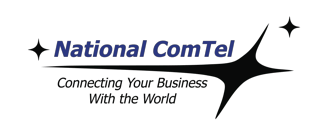Were you aware that there is a policy in the Federal government that allows entities like the FCC to bill you and you may not even know it until you receive a late notice with additional fees? On top of that, they can charge you a 25% late fee, admin charges and interest. And now several State governments are taking up this practice.
According to the government, since they post information “Public Notice” on their web site, it is public information and it is your responsibility to know about it. When something may or may not affect your business, when payment are due. Sometimes the information you are looking for is three, four, five layers deep and you are responsible to find it.
In speaking with many business owners, they have a difficult time keeping up with the government rules, regulations and reporting because they are a small business with limited resources. Why can’t the government send a simple email and be helpful and work with the people who keep this country moving???
18.
Beginning in FY 2003, we sent fee assessment notifications via surface mail to media services entities on a per-facility basis.14 These notifications provided the assessed fee amount for the facility in question, as well as the data attributes that determined the fee amount. We have since refined
this initiative to be more electronic and paperless.15 In our FY 2010 Notice of Proposed Rulemaking, we proposed to discontinue mailing the media notifications beginning in FY 2011, relying instead on information on the Commission’s website and the use of the Commission-authorized website at
www.fccfees.com.16 In FY 2012, we will continue the practice of not mailing hardcopy notification assessment letters to media licensees.
Interstate Telecommunications Service Providers
25.
In FY 2007, we adopted a proposal to round lines 14 (total subject evenues) and 16 (total regulatory fee owed) on FCC Form 159-W worksheet to the nearest dollar. This revision enabled the Commission to process the ITSP regulatory fee payments more quickly because rounding was performed
in a consistent manner, thereby eliminating processing issues. For FY 2012, we will continue to round lines 14 and 16 when calculating the FY 2012 ITSP fee obligation. In addition, we will continue the practice of not mailing out Form 159-W via surface mail.
